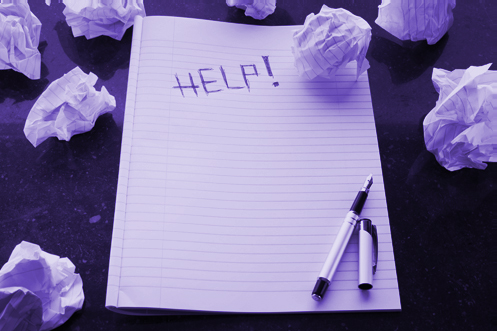R.L. Stine's
Writing Program
Attention, Teachers and Librarians!
Here is my 16 page writing program to use with your students!
My writing program includes the following:
1. How to get ideas.
2. How to develop your ideas.
3. How to get started writing.
4. How to never have writers block.
I've enclosed all of my best writing tricks and secrets in this program. It is totally free of charge. You may download it amd make as many copies you like.
I hope it leads to many fun writing projects!
-- R.L. Stine

Where to get Ideas
There are three places that ideas come from. Let's think of these as the three departments of the Idea Store. The first department of the Idea Store is full of everything we see and hear and find in the world around us. The second department is jam-packed with all of our memories. And the third department contains everything we don't know about and haven't experienced — things we wonder about.
Department One
Experience
Once I saw a boy getting onto an airplane by himself. I watched him as he sat down and started to read a letter. Who was the letter from? What did it say? I don't know, but it gave me an idea for a book. The main character has to leave home and live with her cousin. When she arrives, she finds a letter in her suitcase. The letter is from her mom. It tells her that she is about to begin a secret life — and she will never come home again.
Department Two
Memory
For another story, I remembered my favorite book, Something Wicked This Way Comes by Ray Bradbury. That book is about a very scary carnival. It gave me the idea for writing a book that starts in a carnival. In my story, a girl named Maggie goes to a fortune-teller at a carnival. The fortune-teller tells Maggie that she is evil. Of course, Maggie doesn’t believe her — until the terrible accidents start…
Department Three
What If
I started wondering what it would be like to have a double — someone who looked just like you. And before I knew it, I had the beginning of a story about Ross and a boy who not only looks like him — but says he is him!
Top Ten Tips for Curing Writer's Block
Does this ever happen to you? You have to write something for school. You sit down to write it, and you just can't get a word on the paper. You're stuck. You have writer's block.
Kids always ask me what I do when I get writer’s block. The truth is, I rarely get blocked. That’s because I’ve learned a lot of tricks that help me write even when I feel I don’t know how to begin.

One
Don't ever stare at a blank page or screen! Start with notes, journal entries, outlines, cheat sheets, What ifs. Write something down before you begin.
Two
Know your ending first. If you know where you're going to end up, you'll know where to start.
Three
You don't have to write the beginning first! You can write your first draft in any order. Then you can go back and put it in the right order.
Four
Don't worry about how the first draft sounds. Just put words down — you can always go back.
Five
Before you write, tell your story out loud. Once you've told your story, you'll have a lot less trouble "telling" it to the paper.
Six
Set a timer for a short amount of time — let’s say 13 minutes. Tell yourself you're going to write something — anything — until that timer goes off. When the timer dings — if the writing is going well — set it for another 13 minutes and keep writing. If it's not going well, set the timer and do something else for 13 minutes. Then go back to your writing.
Seven
If you're still stuck, don't throw away the idea — try changing it a little. Try writing it from another character's point of view. Try telling the story in another character's voice.
Eight
Still stuck? Look through a magazine, find a picture of a person or place that looks like your character or setting. Write down a complete and detailed description of what you see. Guess what? You started your story.
Nine
Set a reasonable goal and reward yourself if you get there. Say "I will write two pages today, then I can watch TV for half an hour."
Ten
Don't ever stare at a blank page! Start with notes, journal entries, outlines, cheat sheets, What ifs. Write something down before you begin. (I know. This is the same as number one! I’m repeating it because it's the most important tip.)
Working With Students
How to use this program

Time
Required
Students can complete each section of THE R.L. STINE WRITING PROGRAM in two class periods per week. Or you may decide to use the program as an intensive two-week class activity culminating in the students writing their own stories.

Program
Components
THE R.L. STINE WRITING PROGRAM consists of seven fully reproducible activities designed for use with grades 3–8.

Getting
Started
Students can work independently, in small groups, or together as a class on the activities in the writing program.
You may want to introduce the program by leading the class in a discussion about the writing process. How do writers get their ideas? What makes a story interesting? Then distribute the first activity sheet.
THE R.L. STINE WRITING PROGRAM has been designed to help students overcome their anxiety about writing by providing a writing process that can be followed in a step-by-step manner. Popular author R.L. Stine gives tips and strategies for finding ideas to write about, developing characters and plots, and revising. There are short writing activities throughout to help students gain confidence and proficiency in writing.
Download the R.L. Stine Writing Program now.
